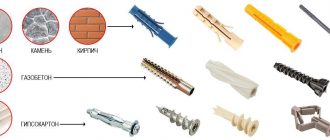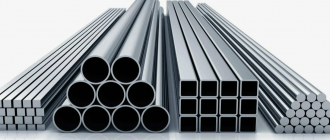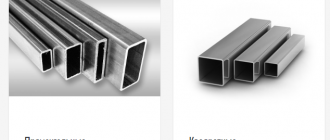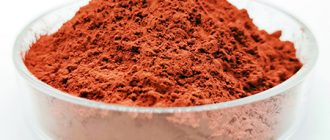- Problems with high water flow rate
- 1. Erosion
- 2. Sewer overflows
- 3. Property damage
- 4. Transportation disruption
- 1. Increasing storm drain capacity
- 2. Green infrastructure
- 3. Urban planning
- 4. Public education
- Causes of high water flow rate
- 1. Intense Rainfall
- 2. Steep Terrain
- 3. Insufficient Drainage Infrastructure
- 4. Increased Impervious Surfaces
- 5. Lack of Vegetation
- 6. Climate Change
- Последствия высокой скорости потока воды
- Эрозия почвы
- Затопление
- Загрязнение воды
- Ухудшение качества воды
- Повреждение существующей инфраструктуры
- Solutions to Slow Down Water Flow Rate
- 1. Green Infrastructure
- 2. Rain Barrels and Cisterns
- 3. Detention and Retention Ponds
- 4. Grass Swales and Contour Trenches
- 5. Permeable Surfaces
- 6. Channel Modifications
- 7. Urban Planning and Land Use Management
- Benefits of reducing water flow rate
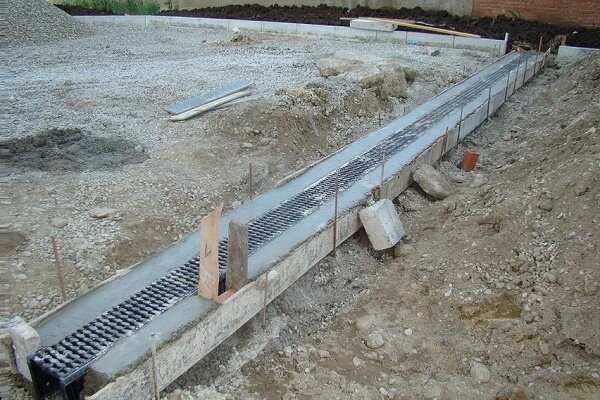
Когда ливень начинает, вода может быстро накапливаться в ливневой канализации и вызывать неприятности, такие как затопления и повреждение инфраструктуры. Однако есть несколько способов замедлить поток воды и предотвратить такие проблемы.
Первым шагом может быть создание отводных канав или борозд, чтобы вода могла стекать медленнее. Это может быть особенно полезно на неровных поверхностях.
Еще одним методом является использование штормовых сепараторов или отстойников, которые отделяют загрязнения и мусор от воды, позволяя ей стекать медленнее.
Наконец, регулярное обслуживание системы ливневой канализации, включая очистку и ремонт, поможет убедиться, что она функционирует без сбоев и может эффективно замедлять поток воды.
Problems with high water flow rate
Have you ever experienced heavy rain causing flooding on the streets? The water flowing through the storm drains can sometimes be overwhelming, leading to potential damage and inconvenience for everyone involved. In this article, we will explore the problems that occur with high water flow rates in the stormwater drainage system and possible solutions to mitigate these issues.
1. Erosion
One of the main problems caused by high water flow rates is erosion. The force of the rushing water can wear away the soil and destabilize the surrounding areas, leading to sinkholes and structural damage. This can be particularly problematic in urban areas where the ground is often covered with concrete or asphalt, limiting natural absorption and increasing runoff.
2. Sewer overflows
Another issue that arises from high water flow rates is sewer overflows. When the stormwater system becomes overwhelmed, excess water can enter the sewer network, causing it to exceed capacity. This can result in untreated sewage being discharged into water bodies, posing a threat to human health and the environment. Additionally, the influx of water can also cause damage to sewer infrastructure.
3. Property damage
High water flow rates can lead to property damage, both in residential and commercial areas. Flooded basements, waterlogged yards, and damaged foundations are just a few examples of the potential destruction caused by excessive water flow. Not only does this result in significant financial loss for property owners, but it also disrupts daily routines and can be emotionally distressing.
4. Transportation disruption
When storm drains are unable to handle the high water flow rates, streets can quickly become flooded, causing transportation disruptions. Cars may be stranded, public transportation may be halted, and emergency response vehicles could struggle to reach their destinations. The impact on daily commutes, businesses, and essential services can be severe.
With the multiple problems associated with high water flow rates, it is crucial to find effective solutions to mitigate these issues. Some potential strategies include:
1. Increasing storm drain capacity
One solution is to increase the capacity of storm drains to handle higher flow rates. This can involve enlarging the drain pipes or adding additional drainage channels in areas prone to flooding. By improving the infrastructure, water can flow more efficiently, reducing the risk of erosion, sewer overflows, and property damage.
2. Green infrastructure
Implementing green infrastructure practices, such as rain gardens, bioswales, and permeable pavements, can help slow down and absorb excess water. These techniques promote natural infiltration and reduce reliance on the stormwater drainage system. Green infrastructure not only helps manage high-flow situations but also provides environmental benefits by improving water quality and enhancing urban biodiversity.
3. Urban planning
Urban planning plays a crucial role in addressing high water flow rates. By considering the natural topography, land use, and stormwater management in the early stages of development, cities can design more resilient systems. Incorporating green spaces, creating retention ponds, and preserving natural drainage patterns can prevent or alleviate the problems associated with excessive water flow.
4. Public education
Lastly, public education and awareness about responsible water management are essential in reducing the impact of high water flow rates. Encouraging individuals to divert downspouts away from impervious surfaces, disconnecting sump pumps from sewer systems, and implementing rainwater harvesting techniques can all help decrease the amount of runoff entering the storm drains.
By acknowledging and addressing the problems caused by high water flow rates, we can take significant steps towards creating more sustainable and resilient communities. Through infrastructure improvements, green initiatives, thoughtful urban planning, and individual actions, we can prevent flooding, protect our environment, and ensure a better future for all.
Causes of high water flow rate
High water flow rate in stormwater drainage systems can have various causes that contribute to the rapid movement of water. Understanding these causes is crucial in finding effective solutions to slow down the flow and prevent potential flooding and erosion issues.
1. Intense Rainfall
One of the main causes of high water flow rate is intense rainfall. When a heavy downpour occurs, large volumes of water are quickly collected on impervious surfaces such as roofs, roads, and parking lots. This concentrated flow can overwhelm the capacity of the drainage system, leading to a rapid increase in water flow.
2. Steep Terrain
A steep terrain can also contribute to high water flow rates. When rainfall occurs on slopes or hills, gravity causes the water to flow rapidly downhill. The steeper the slope, the faster the water will move, increasing the flow rate in the drainage system.
3. Insufficient Drainage Infrastructure
Inadequate or outdated drainage infrastructure can also lead to high water flow rates. If the system is not designed to handle the volume of water generated during rainfall events, it can quickly become overwhelmed. This can result in localized flooding and increased flow rates downstream.
4. Increased Impervious Surfaces
The expansion of urban areas and the increase in impervious surfaces, such as concrete and asphalt, can contribute to high water flow rates. These surfaces do not allow water to infiltrate into the ground, so it quickly runs off into the drainage system, increasing the flow rate.
5. Lack of Vegetation
The absence of vegetation in urban areas can also contribute to high water flow rates. Plants and trees play a crucial role in slowing down the movement of water by absorbing and retaining it through their root systems. Without vegetation, water is free to flow rapidly through the drainage system.
6. Climate Change
Climate change can also impact water flow rates. Changes in precipitation patterns, including more intense rainfall events, can increase the volume of water entering the drainage system. Additionally, rising temperatures can lead to faster evaporation rates, reducing the time water has to infiltrate into the soil and increasing the flow rate.
Understanding the causes of high water flow rates is essential in implementing effective measures to slow down the flow in stormwater drainage systems. By addressing these causes, such as improving drainage infrastructure, implementing green infrastructure practices, and promoting sustainable urban development, we can help mitigate the risks associated with high water flow rates and create safer and more resilient communities.
Последствия высокой скорости потока воды
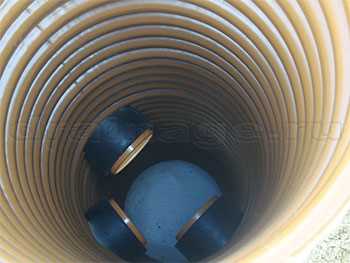
Нерегулируемая высокая скорость потока воды в ливневой канализации может привести к ряду серьезных последствий. Давайте рассмотрим некоторые из них:
Эрозия почвы

Высокая скорость движения воды может вызывать эрозию почвы, что в свою очередь может приводить к разрушению опор инфраструктуры, включая дороги, мосты и здания. Эрозия почвы также может стать причиной сходов и оползней.
Затопление
Поток воды с высокой скоростью может приводить к затоплению домов, подвалов, автомобилей и инфраструктуры. Затопления могут наносить значительный ущерб как для собственности, так и для жизни людей, особенно если они получаются внезапно и без предупреждения.
Загрязнение воды
Высокая скорость потока воды может способствовать распространению загрязнений, таких как нефть, газолин, мусор и другие опасные вещества. Эти загрязнения впоследствии могут попасть в природные водоемы и оказывать вредный эффект на местную экосистему.
Ухудшение качества воды
При высокой скорости потока воды возможно смешивание различных источников воды, включая сточные воды и воду из ливневых стоков. Это может привести к загрязнению питьевой воды и повышению содержания вредных веществ, таких как бактерии, вирусы и токсичные химические соединения.
Повреждение существующей инфраструктуры
Высокая скорость потока воды может негативно влиять на существующую инфраструктуру. Разрушение дорожного полотна, повреждение канализационных систем и дренажных труб, а также повреждение фундаментов зданий — все это вполне возможные последствия высокого потока воды.
В целом, высокая скорость потока воды в ливневой канализации может нанести серьезный ущерб окружающей среде, инфраструктуре и здоровью людей. Поэтому важно предпринимать меры для замедления потока воды и обеспечения эффективной системы дренажа во избежание негативных последствий.
Solutions to Slow Down Water Flow Rate
Are you looking for ways to slow down the water flow rate in your stormwater drainage system? Excessive water flow can lead to erosion, flooding, and damage to infrastructure. Fortunately, there are several effective solutions available that can help you manage and control the flow of water. Let’s explore some of these solutions:
1. Green Infrastructure
One way to slow down water flow rate is by incorporating green infrastructure techniques. Green roofs, rain gardens, and permeable pavements are examples of green infrastructure that can help capture and absorb rainwater, reducing its speed. These natural systems not only slow down the flow but also filter and clean the water, improving its quality as it percolates into the ground.
2. Rain Barrels and Cisterns
Collecting rainwater in rain barrels or cisterns can also help slow down the water flow rate. By capturing and storing rainwater from rooftops, you can significantly reduce the amount of water entering your stormwater drainage system at once. This stored water can later be used for irrigation or other non-potable purposes.
3. Detention and Retention Ponds
Detention and retention ponds are designed to temporarily store excess stormwater and release it at a controlled rate. Detention ponds hold water for a short period during heavy rainfall events, while retention ponds retain water indefinitely. Both types of ponds help to slow down the water flow rate, allowing it to gradually enter the natural drainage system or be absorbed into the ground.
4. Grass Swales and Contour Trenches
Grass swales and contour trenches are another effective solution to slow down water flow rate. These shallow, vegetated channels are designed to direct and slow the flow of water. The vegetation in these swales and trenches helps to absorb and filter the water while reducing its velocity.
5. Permeable Surfaces
Replacing impermeable surfaces like concrete or asphalt with permeable surfaces can also help to slow down water flow rate. Permeable surfaces allow water to infiltrate into the ground, reducing the amount of runoff and preventing excessive flow. Permeable pavers, porous concrete, or gravel are some examples of permeable surfaces that can be used.
6. Channel Modifications
In some cases, modifying the shape or alignment of channels can help to slow down the water flow rate. Installing bends, berms, or check dams can create obstacles that disrupt the flow and reduce its velocity. These modifications help to dissipate the energy of the flowing water and prevent erosion.
7. Urban Planning and Land Use Management
Proper urban planning and land use management are crucial in slowing down water flow rate. By implementing measures such as preserving natural areas, promoting responsible construction practices, and managing impervious surfaces, the amount of runoff can be reduced, and the flow rate can be controlled more effectively.
By implementing these solutions, you can effectively slow down the water flow rate in your stormwater drainage system, reducing the risk of erosion, flooding, and damage. Remember, it’s important to assess your specific situation and consult with professionals to determine the most suitable solutions for your needs.
Benefits of reducing water flow rate
Reducing the water flow rate in stormwater drainage systems can provide a range of benefits, both for the environment and for individuals. By controlling the speed at which water flows through these systems, we can help prevent flooding and manage water resources more effectively. Here are some of the key advantages of reducing water flow rate:
- Flood prevention: One of the most important benefits of reducing water flow rate is the prevention of flooding. By slowing down the flow of water, we can reduce the risk of overwhelming drainage systems and causing damage to surrounding areas.
- Erosion control: Fast-flowing water can cause erosion in streams, riverbanks, and other natural areas. By reducing the flow rate, we can minimize erosion and preserve the integrity of these ecosystems.
- Water quality improvement: When water rushes through drainage systems, it can pick up pollutants and carry them into rivers, lakes, and oceans. By slowing down the flow, we can give these pollutants a chance to settle and be filtered out, leading to cleaner water sources.
- Increased groundwater recharge: Slowing down the flow of water allows more time for it to be absorbed into the ground, leading to increased groundwater recharge. This can help replenish aquifers and ensure a sustainable water supply.
- Reduced infrastructure damage: Excessive water flow can cause damage to infrastructure such as roads, bridges, and buildings. By reducing the flow rate, we can minimize the risk of infrastructure damage and save on repair costs.
- Promotes biodiversity: Slower-flowing water provides a more suitable habitat for many aquatic species. By reducing the flow rate, we can create an environment that supports a greater variety of plants and animals, promoting biodiversity.
Overall, reducing the water flow rate in stormwater drainage systems offers numerous benefits for the environment, communities, and infrastructure. By implementing measures to slow down the flow, we can mitigate the risks of flooding, erosion, and water pollution, while also promoting sustainable water management and the conservation of natural ecosystems.

